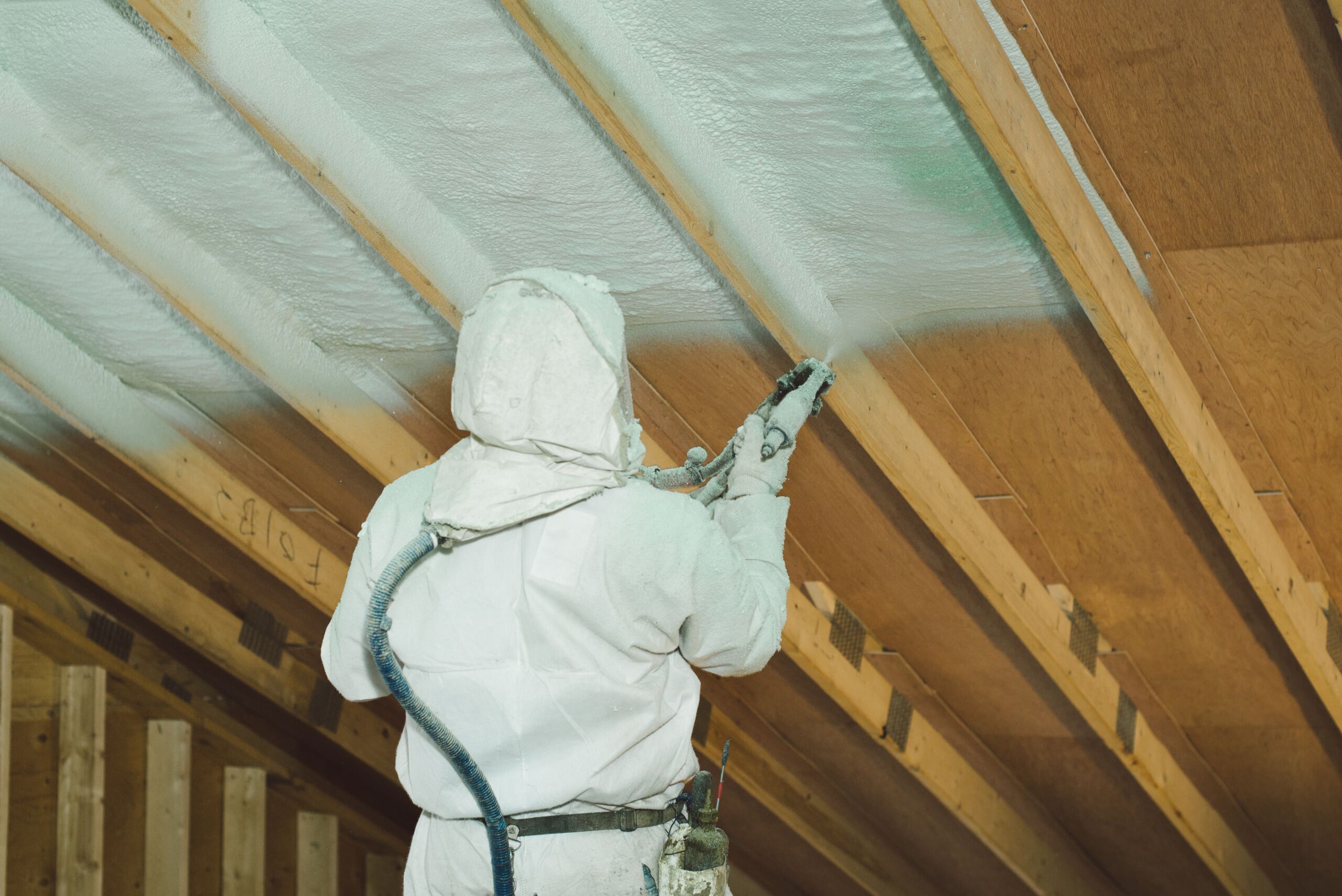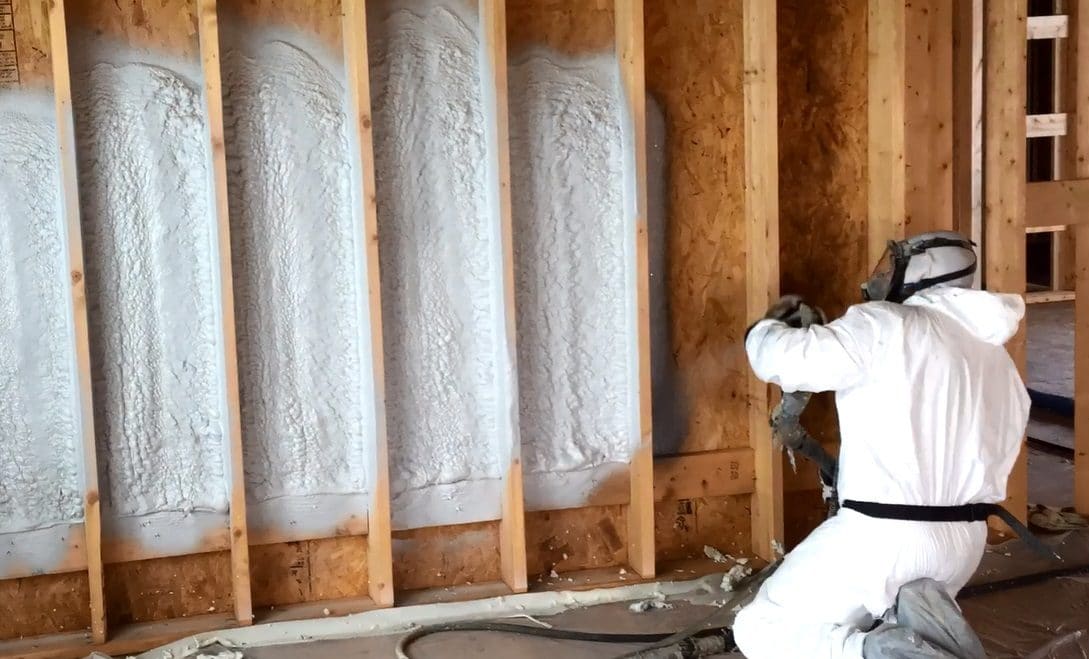Closed-cell spray foam is widely recognized for its insulation properties, but its role in structural reinforcement is often overlooked. Beyond thermal resistance and moisture control, it provides tangible benefits to wall, roof, and foundation stability—especially in climates where buildings must withstand pressure from wind, moisture, and shifting foundations.
This article examines how closed-cell spray foam enhances structural integrity in both residential and commercial buildings. You’ll learn how its density, adhesion, and rigidity translate into long-term strength, reduced movement, and resistance against structural degradation.
Closed-Cell Spray Foam and Structural Support
Closed-cell spray foam differs significantly from open-cell varieties in terms of density and mechanical properties. It acts as both insulation and a semi-structural material.
High Compressive Strength Adds Rigidity
The compressive strength of closed-cell foam ranges from 25 to 60 psi, depending on the formulation. This density allows it to support structural loads when applied between studs, under slabs, or behind sheathing.
- It minimizes wall movement and deformation over time.
- Adds resistance against racking caused by lateral forces like wind.
- Reinforces metal and wood framing in retrofit and new construction.
![Structural Spray Foam Strength [Expert Guide] | Accufoam®](https://accufoam.com/wp-content/uploads/2021/04/ACCUFOAM-Contractor-Photograph-7-scaled.jpg)
Adhesion Enhances Shear Resistance
Closed-cell foam creates a continuous bond with most surfaces, including wood, metal, and concrete. This adhesive property helps prevent separation between layers of a wall assembly or roof system.
- Reduces the need for mechanical fasteners in some assemblies.
- Distributes stress more evenly across the structure.
- Improves the shear strength of stud walls and roof decks.
Air and Moisture Sealing Adds Longevity
Unlike open-cell foam, closed-cell spray foam is impermeable to water vapor. This plays a key role in preventing rot, mold, and degradation of building materials.
- Limits infiltration of water and humid air.
- Protects structural components such as plywood, OSB, and joists.
- Helps meet strict air barrier requirements in energy codes.
Application Areas That Benefit from Structural Support
The ability of closed-cell foam to reinforce structures isn’t confined to one area—it supports several key building components.
Wall Cavities
When sprayed between studs, the foam’s expansion fills gaps and adheres tightly to both the framing and exterior sheathing.
- Minimizes racking in wind-prone areas.
- Limits thermal bridging and stud deformation.
- Common in hurricane and seismic zone designs.
Roof Decks
Closed-cell foam can be applied directly to the underside of roof decks, especially in unvented attic designs.
- Prevents uplift from wind pressure.
- Increases diaphragm strength of the roof system.
- Adds insulation without additional layers or bracing.

Crawl Spaces and Foundation Walls
Foam applied to foundation walls or crawl space rim joists adds rigidity and reduces moisture intrusion.
- Prevents lateral soil pressure damage.
- Strengthens concrete blocks and older stone foundations.
- Ideal for flood-prone basements.
Structural Reinforcement in Retrofitting Projects
Closed-cell foam is increasingly used in older buildings needing structural upgrades without major demolition. Its ability to work within tight, inaccessible cavities gives it an edge over rigid foam panels or mineral wool boards.
Improving Framing Performance
Older homes often have uneven framing or undersized studs. Closed-cell foam bonds to these inconsistencies and adds dimensional stability.
- Helps keep framing in place during seasonal expansion and contraction.
- Reduces vibrations and flexing in floors or walls.
- Aids in restoring performance without rebuilding.
Reinforcing Load-Bearing Walls
Though not a replacement for structural beams, closed-cell foam adds lateral support to load-bearing partition walls or exterior walls in aging homes.
- Minimizes cracking in plaster or drywall.
- Provides interim structural support before major remodeling.
- Useful in historic home preservation.

Structural Contributions of Closed-Cell Spray Foam
| Application Area | Structural Benefit | Foam Characteristic Used |
|---|---|---|
| Wall Cavities | Prevents racking, adds stiffness | Adhesion + Compressive strength |
| Roof Underside | Resists uplift, improves diaphragm | Closed-cell density |
| Foundation Walls | Blocks moisture, resists pressure | Vapor impermeability |
| Retrofit Framing | Stabilizes old studs | Seamless bonding |
Common Questions
Does closed-cell spray foam add enough structural strength to replace bracing?
No. It supports and stabilizes existing framing but is not a substitute for engineered structural elements like braced wall panels, shear walls, or beams.
Can closed-cell foam help reduce wall movement in high-wind areas?
Yes. Its adhesive bond and density reduce wall flex and racking under wind pressure. It’s often used in coastal homes as part of wind-resistant assemblies.
Is spray foam effective in preventing cracks in drywall?
Indirectly, yes. By reducing movement in studs and limiting moisture changes, closed-cell foam can lower the chances of expansion-related cracking in interior finishes.
How does spray foam compare to rigid foam boards for reinforcement?
Spray foam creates a monolithic layer that bonds to irregular surfaces, while rigid boards must be mechanically fastened and may shift. For uneven or older construction, spray foam offers better reinforcement coverage.
Conclusion
Closed-cell spray foam delivers more than thermal protection—it adds meaningful structural value to various parts of a building. Through its rigidity, adhesion, and moisture-blocking properties, it becomes part of the structure rather than just a passive layer.
Contractors and builders looking to improve wall and roof performance can consider it as part of a hybrid approach—working alongside framing, fasteners, and sheathing to extend a building’s resilience, especially in demanding climates or aging structures.
FAQs
How thick should closed-cell spray foam be for structural reinforcement? For walls and roofs, 2 to 3 inches is typically sufficient. This provides both thermal insulation and mechanical support. Greater thickness may be needed for load-bearing applications or vapor control.
Does closed-cell foam reduce noise as well as improve strength? It offers some sound dampening, but not as much as open-cell foam. Its primary benefit is structural enhancement through density and adhesion.
Is spray foam safe for use on load-bearing exterior walls? Yes, it can be applied safely, but it should not replace structural bracing. It’s best used to supplement the rigidity of wood or steel framing.
How long does closed-cell spray foam last as a structural component? When properly installed, it can last 50 years or more. It resists moisture, pests, and degradation—contributing to long-term structural performance.
Can spray foam insulation help with seismic reinforcement? Yes, in some cases. Its bonding strength helps keep materials in place during minor seismic shifts, although it should not be considered a seismic retrofit solution on its own.
Reviewer: Emily Martinez has 12 years of experience in spray foam insulation. She reviewed this article and suggested ways to make the content more useful for contractors looking to grow their customer base.

